Oozing skin irritations
The skin is the organ that insulates and protects the body from the outside world. When attacked, the skin's repair process is activated to restore barrier and metabolic functions.
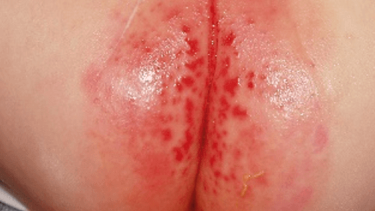
To support your patients
Co-prescription
Our skin is weakened by irritation caused by external damaging factors such as cold and irritating agents (allergens, metals, etc.), leading to various skin conditions that manifest themselves as:
- inflammation
- deterioration of the epidermis
- potential risk of infection
In these conditions, there is no loss of material (tissue) and irritation appears gradually, unlike trauma such as cuts, burns or dermatological procedures, where there is sudden loss of material (tissue).
Lesions vary in appearance, from simple redness to the formation of blisters or even necrosis, accompanied by itching or burning sensations.
In this case, there is "oozing", a symptom of many causes.

The different situations
Oozing due to irritants
Diaper rash
Present in newborns, infants and children.
It's linked to skin contact with irritating stools and urine, and can be promoted by diarrhea, teething, antibiotics or even the end of breastfeeding.
Redness is generally localized on convex areas of the buttocks in contact with stool and urine.
Diaper rash is uncomfortable, and if poorly managed, can spread to the entire area in contact with the diaper, leading to superinfections (by Candida albicans).
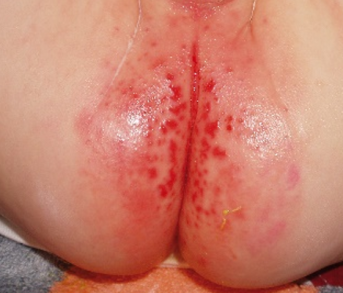
Intertrigo in the folds
Skin inflammation localized to the folds of the body: flexion folds (elbows, knees, groin, armpits) but also folds formed by "skin-to-skin" contact, under a large chest or abdomen.
These inflammatory lesions cause pain, burning and itching. Factors that contribute to skin maceration and irritation include obesity, breastfeeding, incontinence, excessive sweating, etc.
But beyond these symptoms, there are several other dermatoses.
And contrary to popular belief, not everything that affects the folds is fungal in nature.
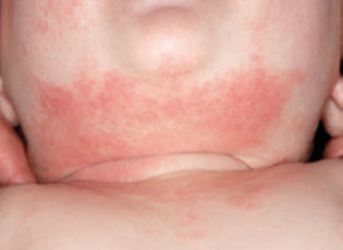
Traumatic oozing (wounds, abrasions)
Causes of oozing related to scrapes, abrasions and infected cuts.
There are many symptoms, such as pain at the wound site or at a distance from the wound, edema or erythema around the wound. The wound may be warm or purulent. Small lymph nodes may also be noticeable near the wound, in the neck, armpits or groin.
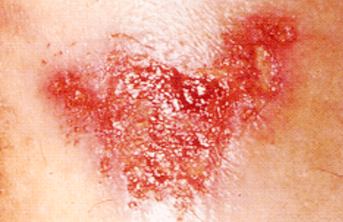
Infectious oozing
Chickenpox
Appears in children as young as 6 months, and in 90% of cases, affects children under 15.
It's a contagious viral disease that confers immunity, but the persistence of the virus in the body is responsible for shingles in adults.
Chickenpox is recognized by the rashes of blisters filled with clear fluid, which turn into scabbed lesions after a few days. Fever may also be associated.
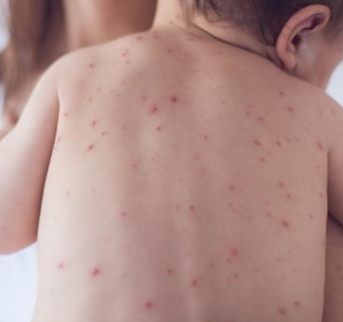
Shingles
Varicella virus, triggered in adults. This virus reappears following a drop in immune defenses (fatigue, stress...) or due to a disease which in turn leads to this immune deficiency (cancer, infection...).
This pathology is painful (both before and after the rash), with tingling, itching, burning or mild fever.
The rashes are made up of blisters on reddened skin on one side of the body, in the path of a sensory nerve (thorax, face).
After a few days, the blisters dry out, forming scabs which eventually fall off.
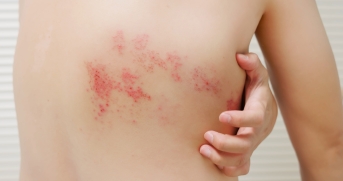
Impetigo
This deterioration of the skin occurs mainly in children between the ages of 2 and 5.
It's a bacterial infection caused by staphylococcus aureus or streptococcus.
Impetigo is favored by skin lesions, poor hygiene, cases at school, nasal infections, diarrhea and certain medications.
There are two forms: nonbullous impetigo, which occurs in 70% of cases and involves a rash of small, translucent blisters or bullae. These lesions burst and ooze within a few hours. They then dry and form a scab that covers a red ulcer. It is rarely painful, but it does itch.
And the rarer bullous impetigo, in 30% of cases, the initial lesion is a larger bulla, and after 2 or 3 days, the lesions multiply, bursting and forming large, rapidly spreading ulcers.
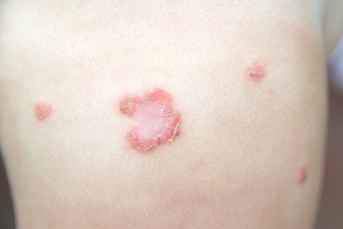
Foot Intertrigo
Can appear at any age and is present in both children and adults.
The folds between the toes are frequently parasitized by dermatophytes, generally Tricophyton rubrum. This is a foot fungus. It's often referred to as "athlete's foot", as it's quite common among athletes, with swimming pool water, saunas and gyms as predisposing factors.
It may be linked to diabetes or obesity.
Cracks, macerated or erythematous whitish plaques and itching are observed.
The fungus can spread over the whole foot, giving it a white, powdery appearance, with localized scaling.
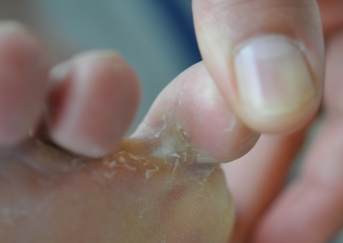
To find out more
If you would like to find out more, read the report by Dr Brigitte Milpied, Dr Nathalie Bodak and Dr Marie-Sophie Chavet .
"Oozing skin lesions in question. Understanding how to manage them".
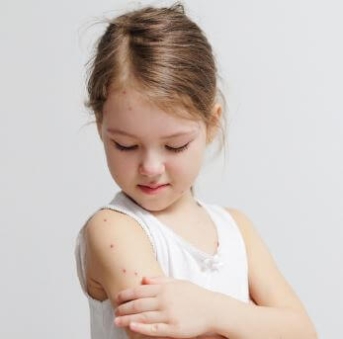
In the news

Summaries of publications and clinical results
Find all our summaries by expertise.
View all summariesWant to read on?
This access is reserved for professionals, registered on Pierre Fabre For Med.
To access the full content, please register or log in if you already have an account.

